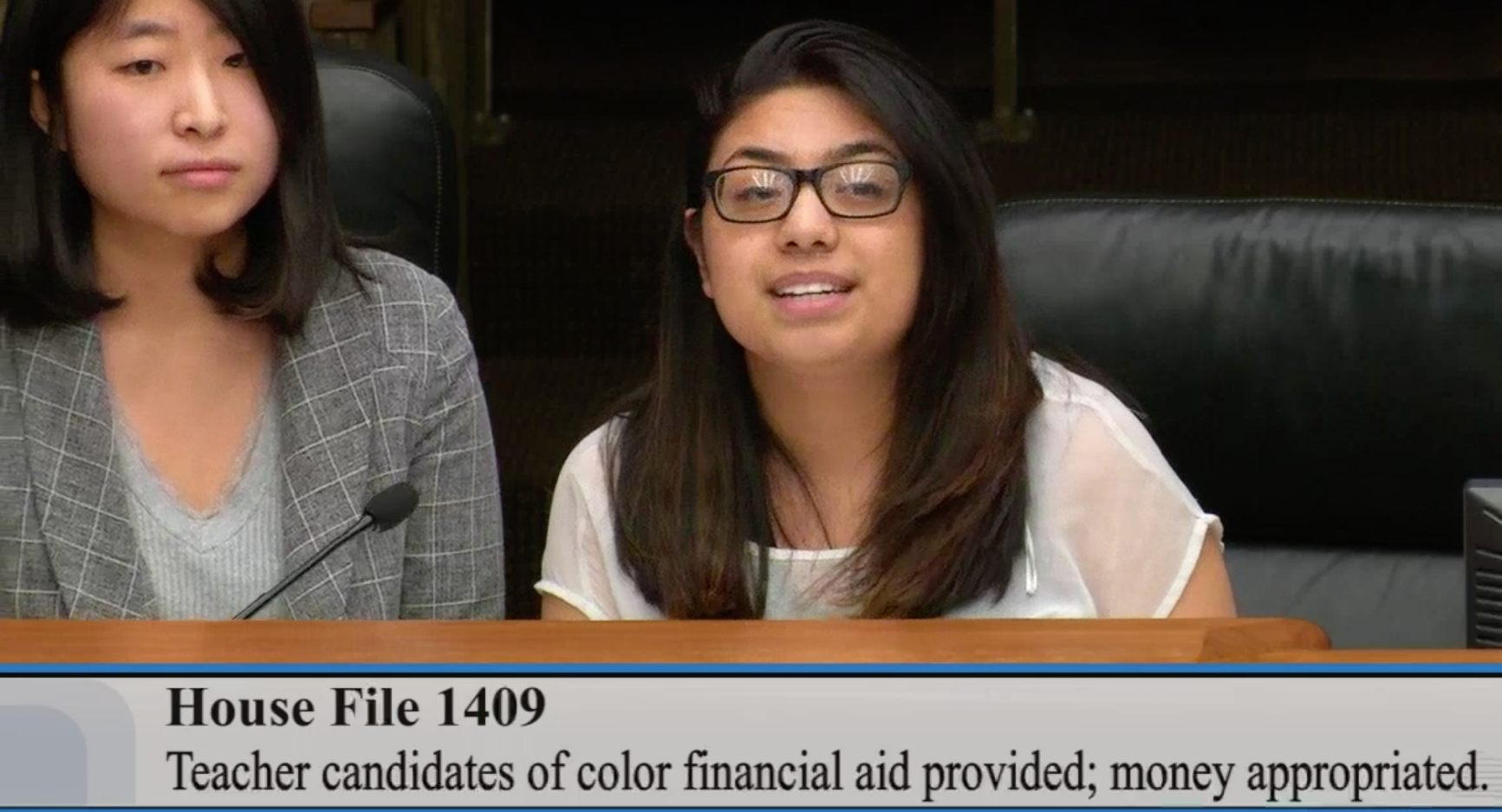Minnesota has an extreme shortage of teachers of color and American Indian teachers. According to a recent report by the Minnesota Department of Education (MDE), teachers of color and American Indian teachers comprise only 4.23 percent of Minnesota teachers, as compared to 31 percent of students.
The severity of the problem is further exacerbated when the data is disaggregated by ethnicity.
Why is this important? A growing body of research indicates that there are a number of benefits for students when their teachers more accurately reflect the population of the classroom. Some of those are culturally based instruction, higher student expectations, and better student-teacher relationships.
MN Coalition Forms to Address the Problem
In response to the shortage, the Coalition to Increase Teachers of Color and American Indian Teachers in Minnesota (Coalition) was formed by seven teacher educators in November 2015. Since then, the group has expanded to include over 700 individuals from 150 schools, districts, nonprofits, organizations, and communities. In recognition of their invaluable work, they were recently awarded a grant of up to $50,000 from Minnesota Comeback.
The Coalition has three formalized goals—short, near, and long—that are aimed at rectifying the shortage problem. Their near-term goal is that, by September 2020, the state will “double the number of teachers of color and American Indian teachers in Minnesota and ensure that at least 20% of candidates preparing to teach are persons of color and American Indian.”
In order to do this, the Coalition has championed two bills—one covers E-12 and the other higher education—this legislative session that are aimed at increasing the state’s teachers of color and American Indian teachers. The bills primarily expand upon and increase appropriations to already existing programs. Some of the key provisions in both bills are summarized below.
Bill #1: Increase Teachers of Color Act of 2017 (S.F.1555/H.F.2077)
Grow Your Own Program: Expands funding for the “Grow Your Own” programs throughout the state, which the bill specifies are for non-licensed educational professional who are of color or who are American Indian. Currently, at least four public school districts—Minneapolis, St. Paul, Austin, and Rochester—have “Grow Your Own” programs.
Collaborative Urban Educator (CUE) Program: Continues and expands the CUE program, which is designed to address the “wide gap between the demographics of teachers and students” in the state. Currently, the program is run by Augsburg College, Hamline University, University of St. Thomas, and Concordia University, but it would be expanded to include Greater MN and other metro area institutions by offering competitive grants for recruitment, retention, and induction efforts.
American Indian Teacher Preparation Program: Increases the current appropriation for the American Indian Teacher Preparation program, which provides grants to institutions for scholarship and loan forgiveness for American Indian teacher candidates.
Teacher Shortage Loan Forgiveness Program: Increases the student loan forgiveness amount from $1,000 to $2,000 for each year of licensed service for teachers in shortage areas, and expands the definition of “shortage areas” to include teachers of color.
Bill #2: Scholarships for Teacher Candidates of Color & Expand Grants to Student Teachers in Shortage Areas Program (S.F.1585/H.F.1409)
Teacher Candidates of Color Scholarships: Creates a scholarship program for teacher candidates of color that have been admitted to any Board-approved teacher preparation program throughout the state. The maximum scholarship amount would be $25,000 total, over 2.5 years of full-time study.
Grants to Student Teachers in Shortage Areas: Expands this already existing program by adding “underrepresented racial or ethnic groups” to the list of possible grant applicants. Additionally, because student teaching is unpaid, a stipend of up to $7,500 annually would be made available for candidates to subsidize tuition and the cost of living.
Education Evolving will continue to follow and report on relevant policy topics throughout this session.
Found this useful? Sign up to receive Education Evolving blog posts by email.


